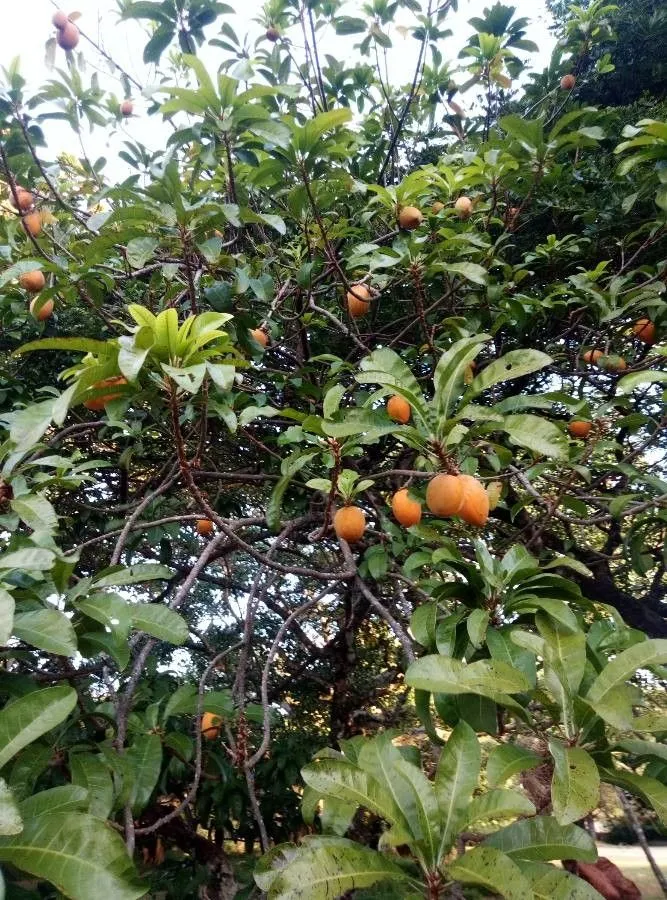
Author: (Kunth) Baehni
Bibliography: Candollea 9: 398 (1942)
Year: 1942
Status: accepted
Rank: species
Genus: Pouteria
Vegetable: False
Observations: Mexico to C. America
The Canistel, scientifically known as Pouteria campechiana, is a noteworthy species belonging to the Sapotaceae family. This tropical fruit tree, which falls under the authorship of (Kunth) Baehni and was first described in Candollea 9: 398 in the year 1942, is native to the regions ranging from Mexico to Central America.
In terms of growth and cultivation, the Canistel thrives in warm, subtropical to tropical climates, making it particularly prevalent in areas with consistent humidity and rainfall. The tree typically reaches a height of around 10 meters, although it can grow taller under optimal conditions. Its evergreen leaves are lanceolate, providing a lush, green canopy that contrasts beautifully with its bright yellow to orange fruits.
The Canistel fruit, often referred to as an “eggfruit” due to its yellow, yolk-like texture, is its most distinguishing feature. The flesh is rich, creamy, and somewhat sweet, bearing a resemblance to a boiled egg yolk in both texture and color, hence the colloquial name. This unique texture makes it suitable for a variety of culinary applications including smoothies, ice creams, and baked goods, although it is most commonly enjoyed fresh.
The edibility and nutritional value of the Canistel fruit highlight its importance in local diets where it is native. Packed with vitamins and minerals, particularly vitamin A and C, it provides a healthy boost, making it a sought-after fruit in its native regions and in areas where it has been introduced successfully.
Historically and culturally, the Canistel has played a significant role in the traditional agricultural practices of indigenous peoples in Mexico and Central America. Its versatility and hardiness have allowed it to endure as a staple crop through generations, contributing to both local diets and economies.
In conclusion, the Canistel is a remarkable and versatile fruit tree, prized not only for its unique and flavorful fruit but also for its adaptability and nutritional benefits. Its presence from Mexico to Central America underscores its importance in both cultural and agricultural landscapes.
Eng: canistel, eggfruit tree, eggfruit-tree, yellow sapote
Por: canistel, sapota-amarela
Swe: canistelsapote
En: Canistel, Eggfruit-tree, Yellow sapote, Eggfruit tree, Eggfruit, Egg fruit
Fr: Jaune d’oeuf, Canistel, Sapote jaune
Pt: Canistel, Sapota-amarela
Es: Caca de niño, Canistel, Fruta huevo, Sapote amarillo, Zapote amarilla, Zapote borracho, Zapotillo
Sv: Canistelsapote
Taken Nov 10, 2014 by Tela Botanica − Liliane Roubaudi (cc-by-sa)
Taken Nov 10, 2014 by Tela Botanica − Liliane Roubaudi (cc-by-sa)
Taken Apr 11, 2022 by Frederick Henderson (cc-by-sa)
Taken Nov 10, 2014 by Tela Botanica − Liliane Roubaudi (cc-by-sa)
Taken Nov 10, 2014 by Tela Botanica − Liliane Roubaudi (cc-by-sa)
Taken Aug 12, 2014 by Nelson Zamora Villalobos (cc-by-nc)
Taken Jan 1, 1900 by EOL − Forest & Kim Starr (cc-by)
Taken Nov 23, 2016 by Hugo SANTACREU (cc-by-sa)
Taken Oct 13, 2021 by Ferreira Otacilio (cc-by-sa)
Taken Jun 11, 2020 by Anthony (cc-by-sa)
Taken May 17, 2021 by Enée Fokou (cc-by-sa)
Taken Nov 3, 2022 by Emma Cote (cc-by-sa)
Taken May 14, 2022 by Tina Jacobson (cc-by-sa)
Taken Oct 16, 2017 by SINAC Pérez Greivin (cc-by-sa)
Taken Nov 23, 2016 by Hugo SANTACREU (cc-by-sa)
© copyright of the Board of Trustees of the Royal Botanic Gardens, Kew.
© copyright of the Board of Trustees of the Royal Botanic Gardens, Kew.
© copyright of the Board of Trustees of the Royal Botanic Gardens, Kew.
Taken Apr 17, 2019 by OTS – E. Salicetti (cc-by-nc-sa)
Taken Jul 23, 2022 by Tago Nist (cc-by-sa)
Taken Apr 17, 2019 by OTS – E. Salicetti (cc-by-nc-sa)
Taken Oct 26, 2020 by abegnot (cc-by-sa)
Taken Oct 13, 2021 by Ferreira Otacilio (cc-by-sa)
Taken Oct 25, 2017 by Nelson Zamora Villalobos (cc-by-nc)
Taken Apr 17, 2019 by OTS – E. Salicetti (cc-by-nc-sa)
Taken Apr 17, 2019 by OTS – E. Salicetti (cc-by-nc-sa)
Taken Oct 26, 2020 by abegnot (cc-by-sa)
Growth habit>: Tree
Family: Myrtaceae Author: (F.Muell.) K.D.Hill & L.A.S.Johnson Bibliography: Telopea 6: 402 (1995) Year: 1995 Status:…
Family: Rubiaceae Author: Pierre ex A.Froehner Bibliography: Notizbl. Bot. Gart. Berlin-Dahlem 1: 237 (1897) Year:…
Family: Sapindaceae Author: Koidz. Bibliography: J. Coll. Sci. Imp. Univ. Tokyo 32(1): 38 (1911) Year:…
Family: Asteraceae Author: A.Gray Bibliography: Pacif. Railr. Rep.: 107 (1857) Year: 1857 Status: accepted Rank:…
Family: Fabaceae Author: Medik. Bibliography: Vorles. Churpfälz. Phys.-Ökon. Ges. 2: 398 (1787) Year: 1787 Status:…
Family: Aspleniaceae Author: (Cav.) Alston Bibliography: Bull. Misc. Inform. Kew 1932: 309 (1932) Year: 1932…